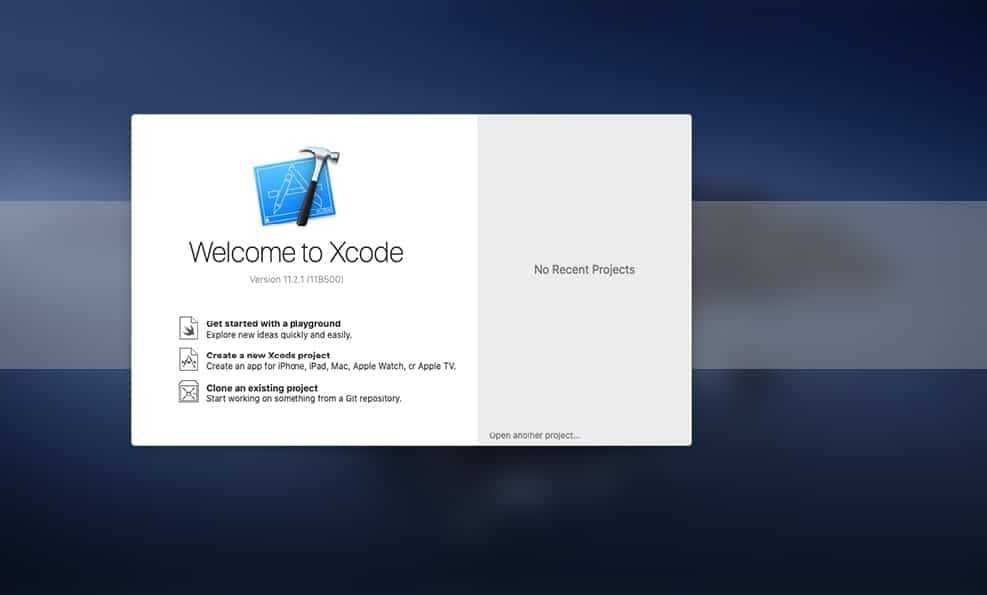

- #Xcode select install install#
- #Xcode select install update#
- #Xcode select install software#
- #Xcode select install code#
- #Xcode select install download#
This folder will be referred to as your openFrameworks root folder (also known as OF_ROOT). If that's the case, you're already done!Īt this point, you should have all you need to build and run OF apps! Let's test it by opening one of the examples that comes with openFrameworks.įirst, extract the folder you downloaded from this website and put it somewhere convenient.
#Xcode select install update#
Select "Install" to begin the process.ĭon't worry if you get an error about the tools being unavailable from the update server! It seems this happens if you already have the tools installed.
#Xcode select install install#
This should prompt you to install the command line tools. To install the command line tools, first finish installing Xcode then open up a terminal (you can find it at Applications/Utilities/Terminal.app), type the following and hit enter: xcode-select -install

Just to verify that you’ve downloaded the correct version, type “ gcc – version” and the terminal will spit back the version that’s currently installed.Once the installation is complete, click Done.A Terms and Agreement screen will: Read it (or don’t) if you accept Apple’s Terms, then hit Agree to proceed with the installation.NOTE: If Xcode Command Line Tools was previously downloaded onto your device, you’ll likely get an error Instead of clicking “Get Xcode” like before, find and click Install at the bottom-right-hand corner of the new window. Then, type “ xcode-select –install” into your terminal and hit Enter. To install Xcode Command Line Tools, navigate to your device’s Terminal app again through Spotlight Search. The decision to exclude them was made to conserve space and avoid unnecessary storage usage, as Unix Tools were deemed necessary for iOS app developers.
#Xcode select install download#
Xcode has almost everything you’ll need to program apps in a tightly packed 3.8 GB download however, most developers will be coding more than just iOS applications, and most Macs come unequipped with the Unix tools that would otherwise let developers branch off into other territories of programming. On the next window hit Create after choosing your desired location – Desktop is assigned as default.Ĭongratulations! You’ve created your first Xcode Project! Installing Xcode Command Line Tools

For now, leave Universal as the selected option and click Next. The Devices tab lists the different devices that you’d like your app to run off of.
#Xcode select install software#
NOTE: the installation may not initiate until you’ve completed particular software updates. If you haven’t already created one, you can do so by clicking here.
#Xcode select install code#
Type “ gcc” into the terminal and hit “ Enter” (gcc is a compiler that turns source code into executable applications).Type in the word “ Terminal” into the Spotlight search field and hit “ Enter” this should execute your Mac’s Terminal app.Press “ Command + Spacebar” to access Spotlight Search.

NOTE: You must have access to an Apple ID account: to register, click here. For this method, Xcode and Command Line Tools are only accessible via Mac and other iOS Devices.Īpple provides Mac devs with both Xcode and Command Line Unix Tools,but you’ll need to access Apple’s servers first in order to reach them: Installing XcodeĪccess your Mac’s Terminal Application or what’s otherwise referred to as the Console anything typed into this terminal is sent straight to your device’s Operating System: Xcode and Xcode Command Line Tools are only accessible through this method via Mac and other iOS Devices. You must have access to an Apple ID account.


 0 kommentar(er)
0 kommentar(er)
